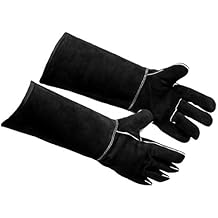Dog training is an essential aspect of responsible pet ownership, and bite gloves are a crucial tool for trainers and dog owners alike. These specialized gloves protect hands during training sessions, especially when working with high-energy breeds or those undergoing bite work training. In this article, we will explore the various aspects of bite gloves, including their types, materials, benefits, and how to choose the right pair for your training needs.
Understanding Bite Gloves

Bite gloves, also known as protection gloves, are designed to safeguard the trainer’s hands and arms from bites while engaging with dogs in training. They allow trainers to teach dogs bite inhibition and control without the risk of injury. These gloves are widely used in various dog training disciplines, including obedience training, protection work, and sport training.
Types of Bite Gloves

When it comes to bite gloves, there are several types available, each suited for different training needs and dog behaviors. Here are the main categories:
- Training Bite Gloves: These are often made from soft leather or synthetic materials, providing a balance between protection and sensitivity. They are great for general training sessions.
- Protection Bite Gloves: Designed for more intense training sessions, these gloves are thicker and often reinforced to withstand stronger bites. They are ideal for working with aggressive or strong breeds.
- Competition Bite Gloves: Used in dog sports, these gloves are designed to meet specific competition standards. They are lightweight yet durable, allowing for a greater range of motion.
- Custom Bite Gloves: Some manufacturers offer custom gloves tailored to the trainer’s specifications, ensuring a perfect fit and protection level.
Materials Used in Bite Gloves

The materials used in the construction of bite gloves can significantly impact their effectiveness and durability. Here are some common materials:
- Leather: A traditional choice, leather is durable and provides excellent protection. It also offers a good grip while remaining flexible.
- Synthetic Fabrics: Materials like nylon or Kevlar are often used for their lightweight properties and resistance to wear. They can be softer than leather but may offer less bite resistance.
- Padding: Many bite gloves come with additional padding to absorb impact and protect against bites. This can be made from foam or gel materials.
Benefits of Using Bite Gloves

Using bite gloves in dog training offers several advantages. Here are some key benefits:
- Safety: The primary benefit of bite gloves is safety. They protect trainers from bites, allowing for a more relaxed training environment.
- Improved Training Outcomes: With the added protection, trainers can focus on teaching dogs effectively without fear of injury, leading to better training results.
- Enhanced Dog Behavior: Bite gloves can help dogs learn appropriate biting behavior by allowing trainers to safely guide them during the training process.
- Durability: High-quality bite gloves are designed to withstand rigorous training sessions, making them a long-term investment for trainers.
How to Choose the Right Bite Gloves

Selecting the appropriate bite gloves is crucial for effective training. Here are some factors to consider:
- Size: Ensure the gloves fit snugly but allow for flexibility. A proper fit ensures better control and comfort during training.
- Material: Choose a material that suits your training style. For instance, if you need more sensitivity, lighter materials may be better.
- Protection Level: Assess the level of protection you need based on the dog’s temperament and training goals. Stronger dogs may require thicker, more protective gloves.
- Budget: While high-quality gloves may be more expensive, consider them an investment in safety and effective training.
Case Studies: Success with Bite Gloves
To illustrate the effectiveness of bite gloves in training, consider the following case studies:
Case Study 1: A Rescue Dog’s Transformation
A local dog trainer worked with a rescue dog that exhibited aggressive biting tendencies. Using bite gloves, the trainer was able to safely engage the dog in bite inhibition training. Over several weeks, the dog learned to control its biting, leading to a successful adoption into a loving home.
Case Study 2: Competitive Training Success
A competitive dog sport trainer utilized specialized competition bite gloves to train a German Shepherd for Schutzhund competitions. The gloves provided the necessary protection while allowing the dog to learn complex bite work skills. As a result, the dog excelled in competitions, showcasing the effectiveness of the training methods used.
Statistics on Dog Bite Incidents
Understanding the landscape of dog bites can emphasize the importance of bite gloves in training. According to the American Veterinary Medical Association (AVMA):
- Approximately 4.5 million dog bites occur in the U.S. each year.
- Of these, about 20% require medical attention.
- Children are the most common victims of dog bites, making the need for safe training practices even more critical.
Best Practices for Using Bite Gloves

To maximize the benefits of bite gloves, consider the following best practices:
- Train Consistently: Regular training sessions help reinforce the skills learned and build trust between the trainer and the dog.
- Monitor Dog Behavior: Always assess the dog’s behavior during training and adjust your approach as necessary.
- Use Positive Reinforcement: Pair the use of bite gloves with positive reinforcement techniques to encourage desirable behaviors.
- Keep Gloves Clean: Proper care and maintenance of bite gloves can extend their lifespan and effectiveness.
Bite gloves are an invaluable tool in the realm of dog training, providing safety, enhancing training outcomes, and promoting better dog behavior. By understanding the various types of gloves, their materials, and how to choose the right pair, trainers can ensure a more effective and enjoyable training experience for both themselves and their dogs. With the added insights from case studies and statistics, it’s clear that investing in quality bite gloves is essential for responsible dog training. Remember to practice safe training techniques and always prioritize the well-being of both the trainer and the dog.


